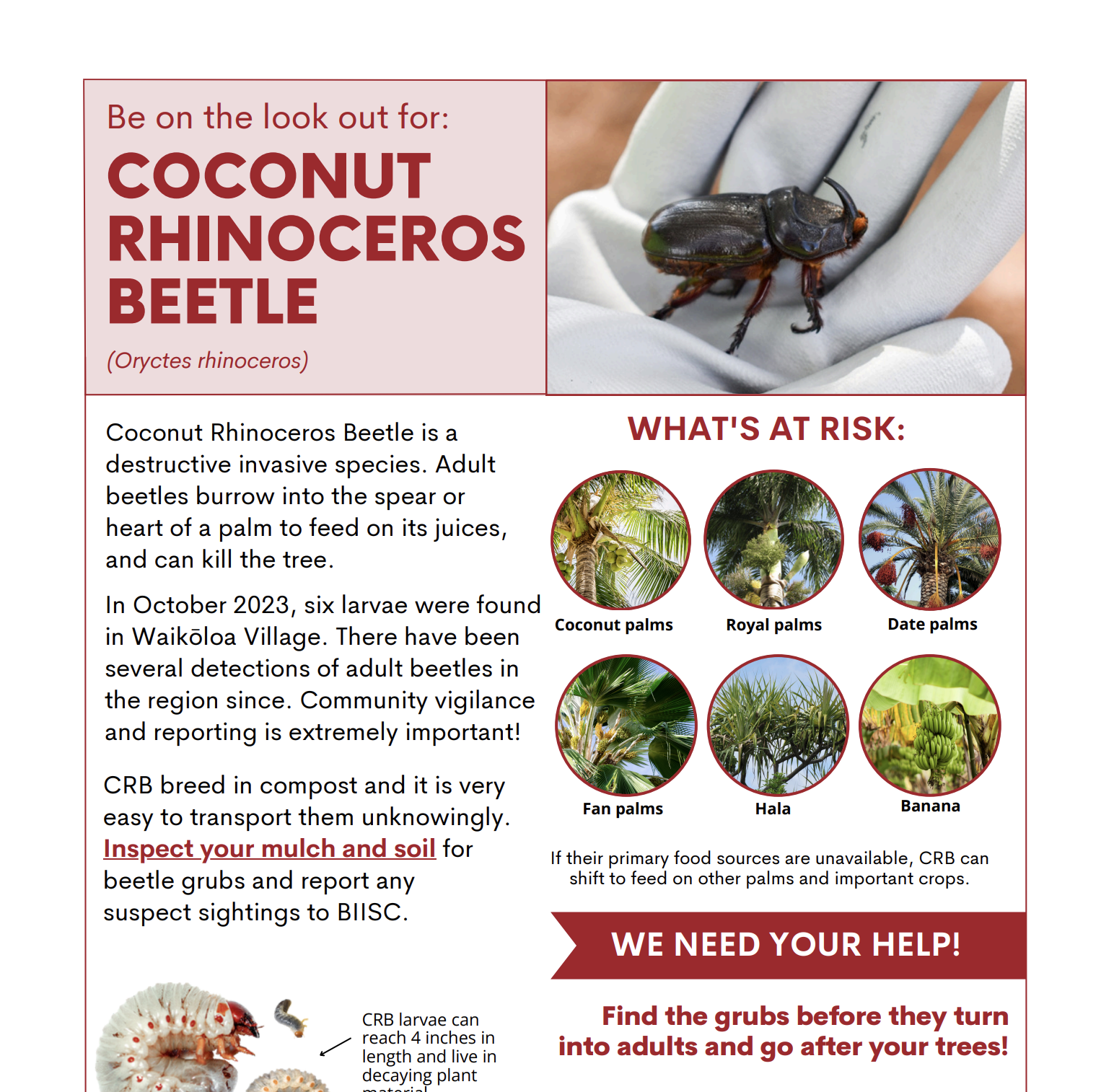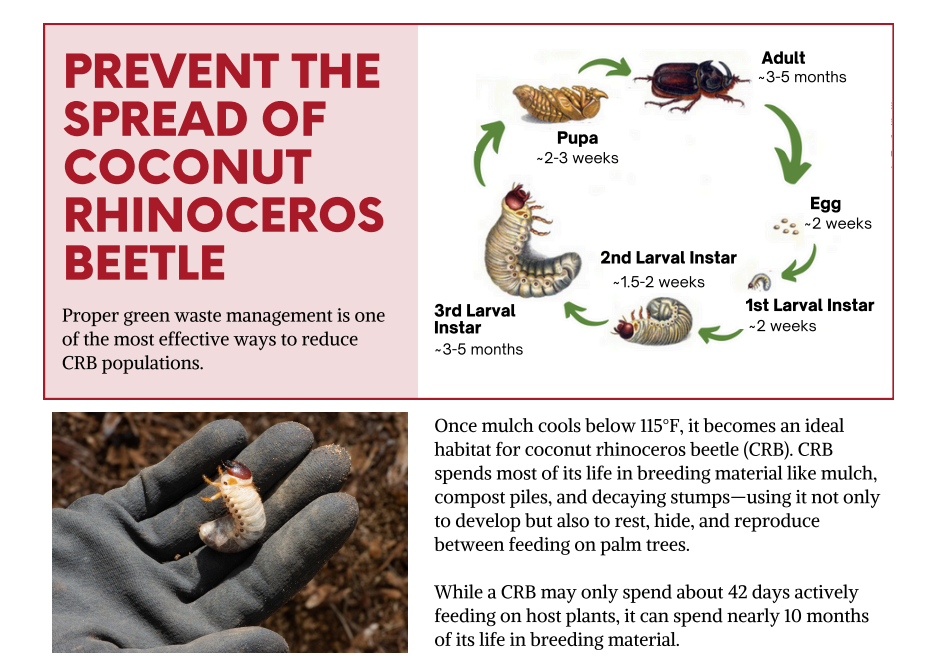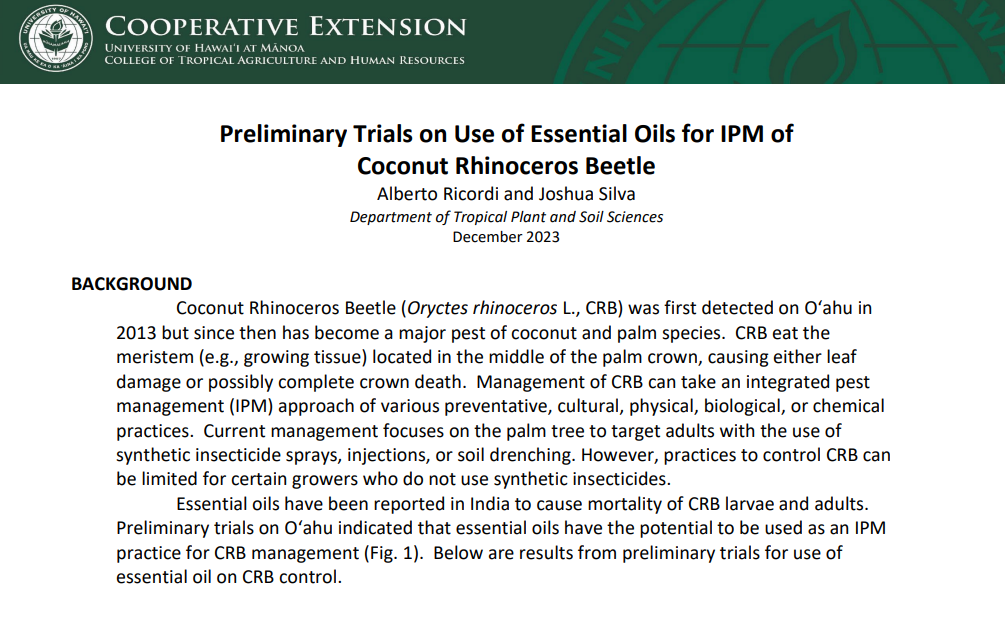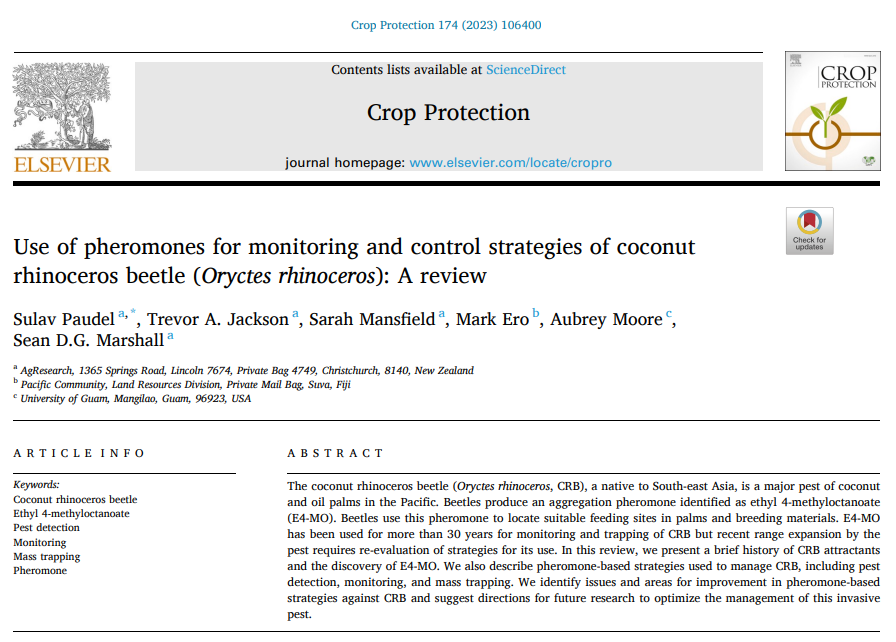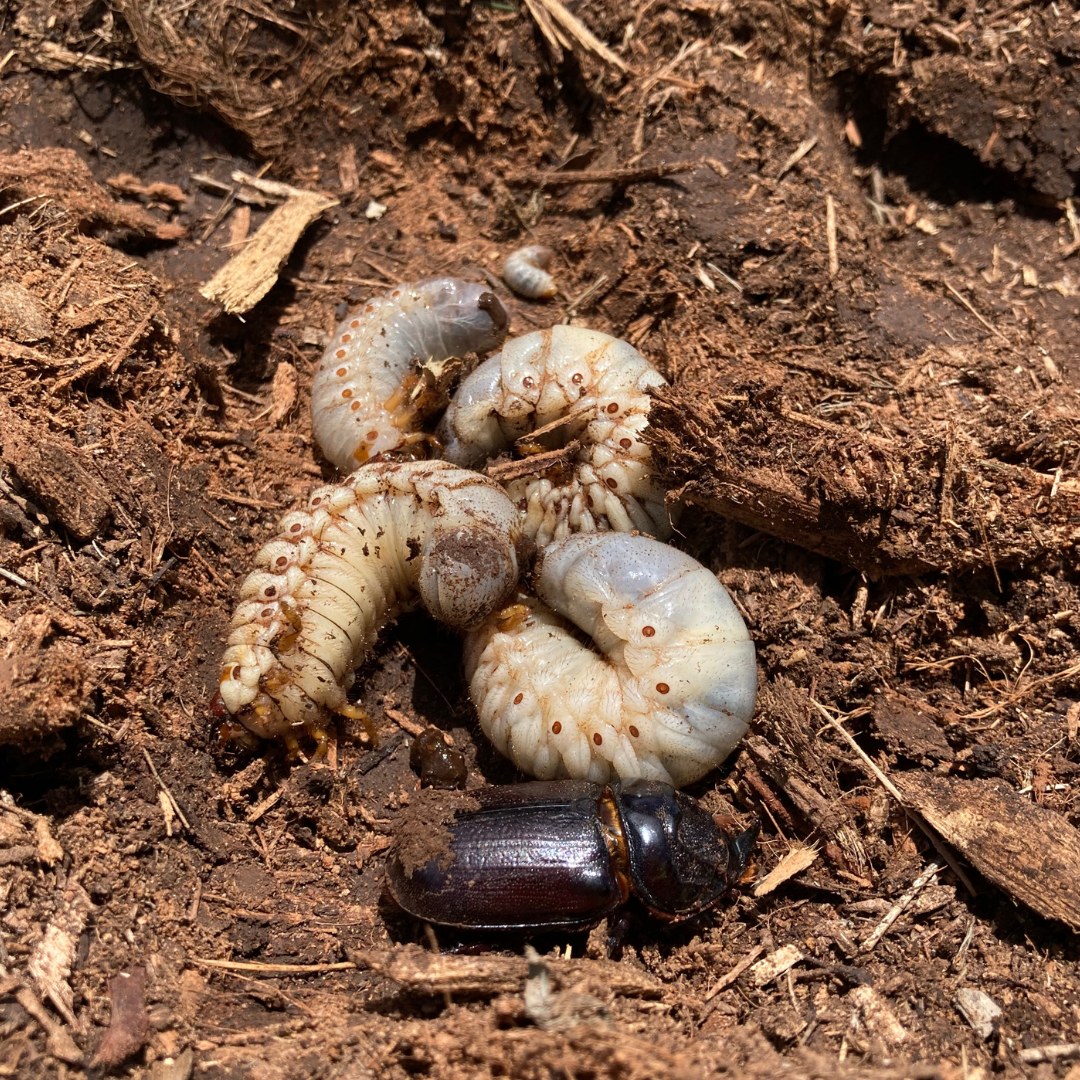
Coconut Rhinoceros Beetle
CLICK HERE TO REPORT ANY SUSPECTED CRB BEETLES, PALM DAMAGE, OR LARVAE!
As of October 2023, coconut rhinoceros beetle (CRB) has been detected in Waikōloa on Hawai’i Island. The beetle is not yet established on our island, and we believe it is possible to eradicate the beetle if we can find and destroy any populations quickly. We need extensive vigilance and assistance from our communities to accomplish this goal! Please take pictures/video of any suspect grubs or palm damage. Contain and hold any beetles or larvae to give to BIISC for confirmation. Use this online form to report suspect CRB. You can contact us via email, Facebook, Instagram, or phone, or bring suspect material to our office in Hilo.
Coconut Rhinoceros Beetle (Oryctes rhinoceros) is a HIGHLY destructive beetle native to Southeast Asia. It feeds on the growing leaves of palm trees, using their large horn and spiny legs to dig into the tree’s crown. After the growing leaves open from the spear it unfurls to show the distinctive V-cuts in the leaves. These V-cuts can sometimes look similar to tree trimmer damage, so it’s important to look for other CRB damage like bore holes on the stems of leaves. This invasive beetle can destroy more than just coconut trees. They also feed on other palm species, like the native loulu, and while they prefer palms they have also been seen going after hala, sugarcane, banana, and taro.
Coconut rhinoceros beetles are black with brown fuzz and are about 1.5-2 inches long. Their most distinct feature is the single long horn. Adult beetles are nocturnal so it is unlikely that you would see them flying around during the day. Their grubs are easier to find and live in compost and decaying plant matter (like coconut stumps). The grubs are off-white with a brownish head capsule. They start off small but can grow up to 3.5 inches long!
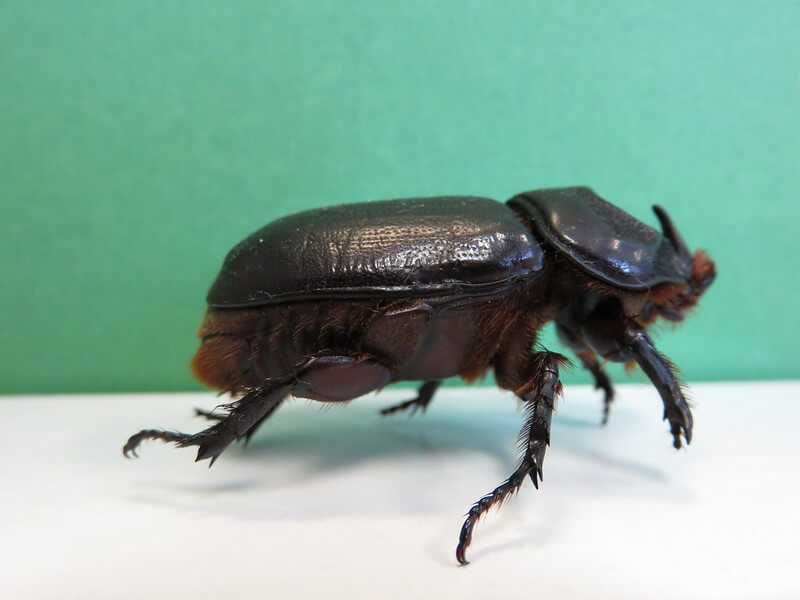
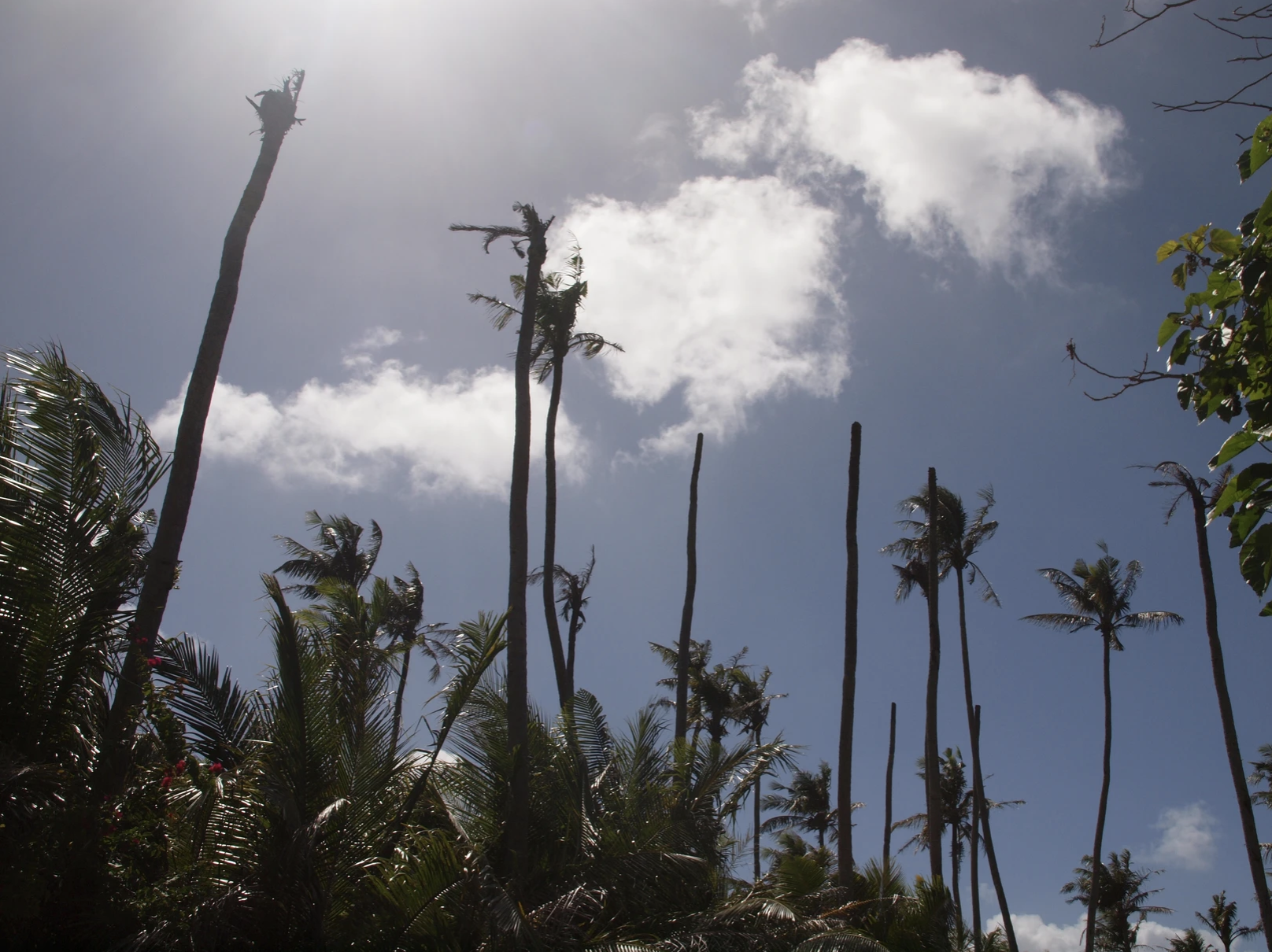
Photos (L-R): Scot Nelson, CRB Response Team
Oriental Flower Beetle, another beetle that is established in Hawaiʻi, has a very similar grub. They prefer to eat fruits that are overripe or already damaged. While they are generalist pests that can attack many different plants and are not typically welcome guests in any garden, they do not cause nearly the destruction of other large beetles in Hawai’i, like the Coconut Rhinoceros beetle (CRB). Both the OFB and CRB grubs can be found in compost. The grubs of the two beetles appear nearly identical to the untrained eye. In fact, the easiest way to tell them apart is not by appearance, but by watching how they move. OFB grubs will flip over onto their back and wiggle away upside-down. CRB grubs will curl up into a C-shape and inch away on their side.
If you come across a suspicious beetle or grub and can’t tell if it’s an OFB or a CRB, take clear pictures and send them to us! Be sure to take a few moments to watch how they move before throwing them in the freezer (get a video if you can!). Providing that information can help us identify the grub species for you.
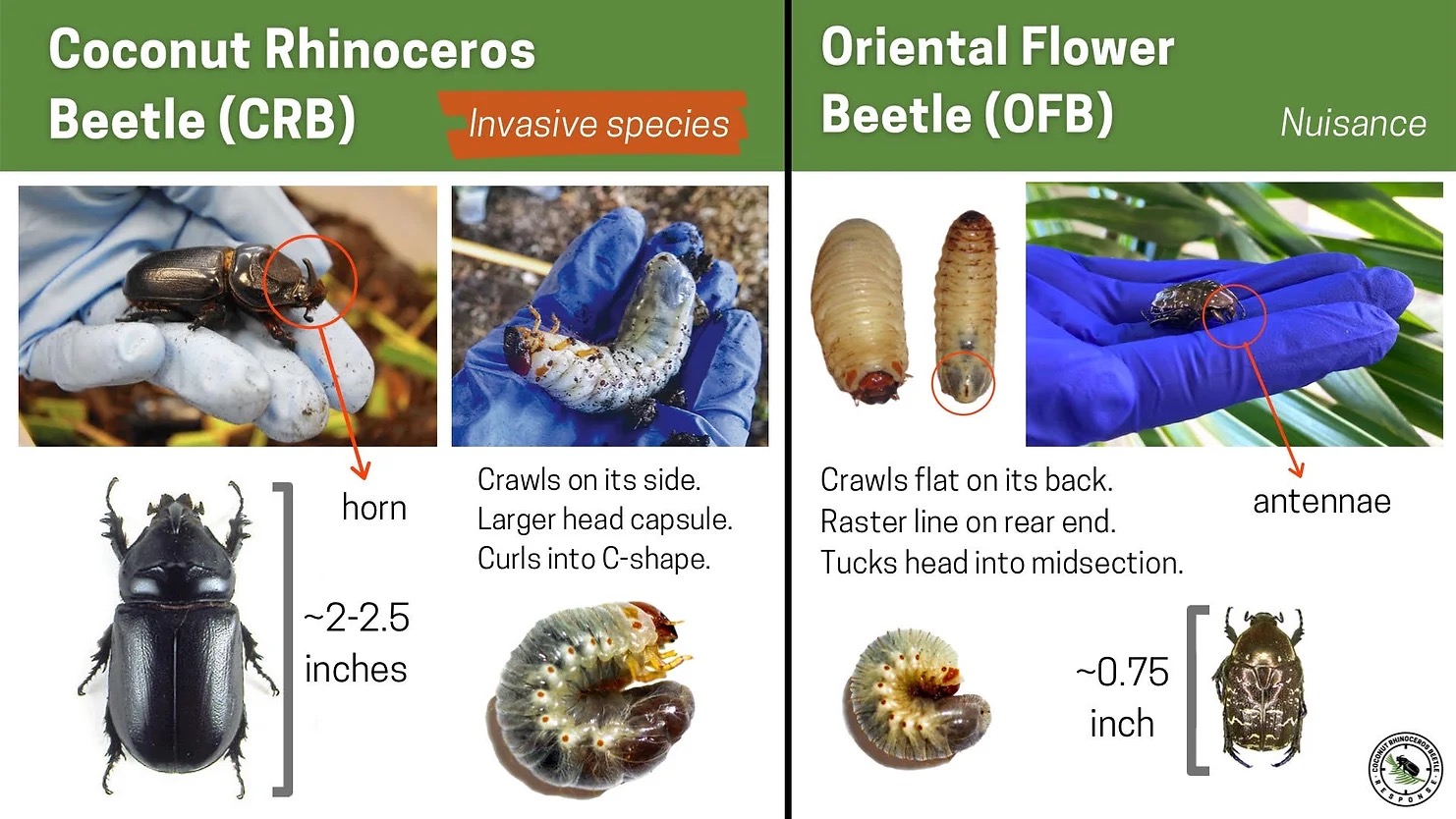
Graphic from Hawaiʻi CRB Response Team – crbhawaii.org
Coconut Rhinoceros Beetle Distribution:
CRB is native to Southeast Asia and has already been introduced to other Pacific islands, including Samoa, Tonga, Palau, Fiji, and Guam.
December 2013: CRB was first detected on O’ahu on the Joint Base Pearl Harbor-Hickam military base. Since then it has continued to spread to other parts of O’ahu.
May 2023: A live beetle was found in traps on Kauaʻi at the Lihue airport. Following further investigation more adults and a breeding site were found on a nearby golf course in Wailua.
September 2023: A dead CRB was also found in a bag of mulch on Maui. So far, no other beetles or grubs have been found on Maui.
October 2023: FIRST BIG ISLAND DETECTION. CRB larvae were collected in the Waikōloa Village area of Hawai’i Island. It is unknown how they reached the Big Island.
April 2024: Four adults found in Waikōloa area. 3 were caught in panel traps and 1 was found dead on a residents lanai.
September 2024: One adult beetle was found in a panel trap in Waikōloa near the initial detection site.
March 2025: 4 adult beetles have been found in traps near the Kona airport and near by areas.
April 2025: Two more adults were found in the same area. One in a panel trap and one in a log trap. A piece of elytra (wing cover) was found at the West Hawaii Veterans Cemetery, but no other specimen has been located.
May 2025: 4 adults detected within buffer zone(Kona airport, HOST park, and Keahole Ag Park). One grub was found outside buffer zone, but mulch the grub was found in was traced back to a business within the buffer zone. Searches of both properties were done and no more grubs were detected.
June 2025: 10 adults found in buffer zone. 1 adult found in Kiholo Park. 4 adults found at Hawaii Community College Palamanui campus. 1 adult found at Kukio.
July 2025: 3 adults found in buffer zone.
August 2025: 30 beetles found. Beetles now being caught in Kona Palisades and south of previous catches (please check community map for exact locations)
September 2025: 21 beetles caught, now in Makalei estates
October 2025: Large breeding site located in Makalei estates. Approximately 90 grubs.
Because CRB breed in compost it is easy to accidentally transport them unknowingly. On multiple occasions, CRB larvae have been found in bags of soil/compost that were bought or shipped from stores on Oʻahu. To help prevent the spread of CRB, HDOA has established a temporary interim rule that prohibits the movement of CRB breeding material from Oahu. Please be vigilant and thoroughly inspect bags of compost/soil, especially if there are visible holes in them.
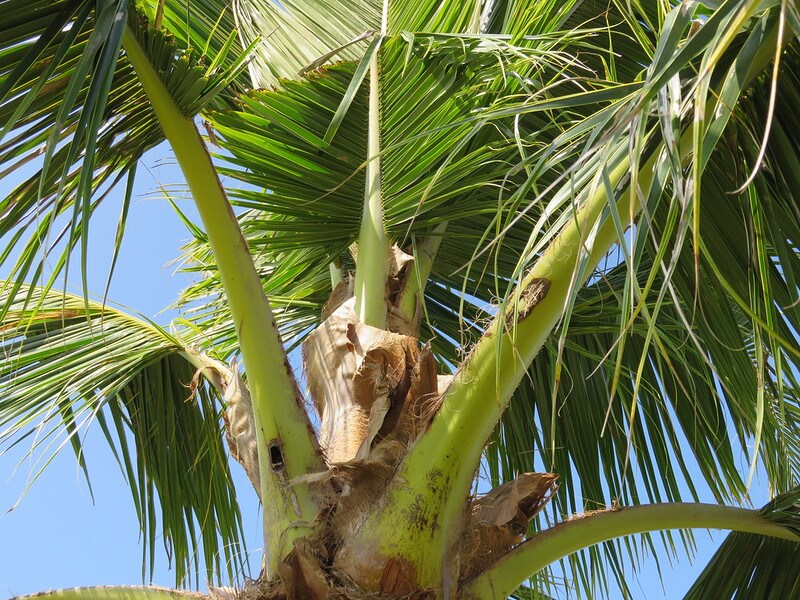
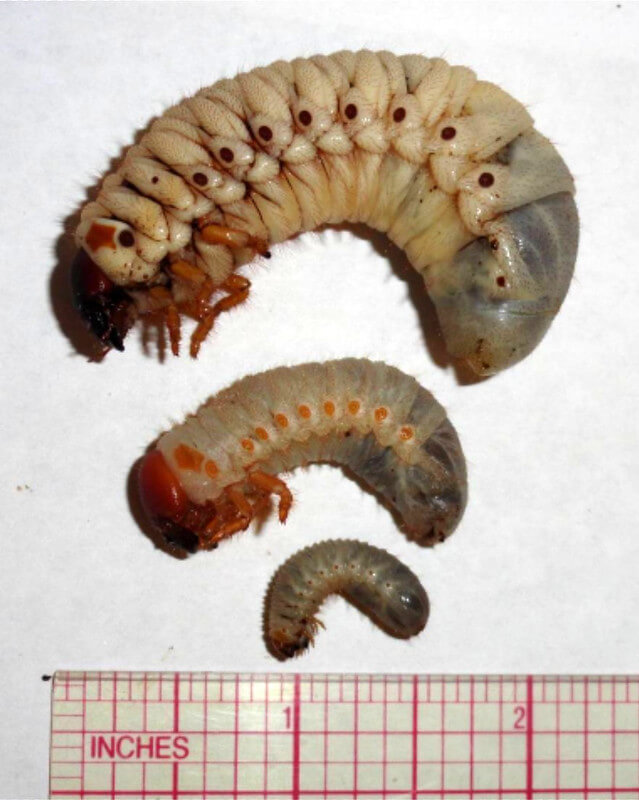
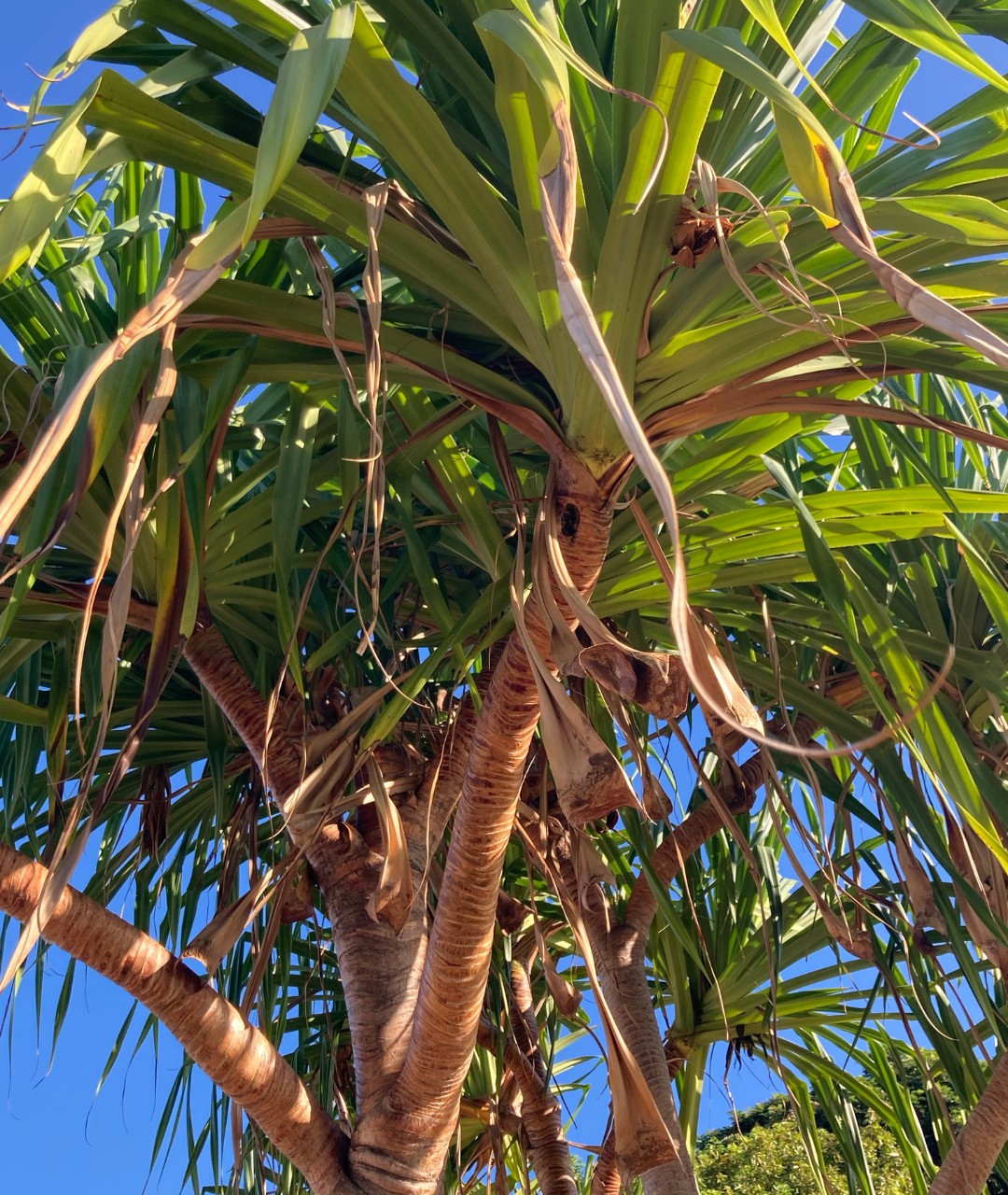
Photos (L-R): Scot Nelson, Scot Nelson, CRB Response Team
Impacts:
- Damages coconut trees and other palms
- Alternative hosts:
- Sugar cane
- Taro
- Banana
- Hala
Description:
- Adults are about 1.5-2 inches long
- Black with brown fuzz
- Large singular horn
- Grubs are fat, pale, brown head capsule, found in compost
- CRB grubs with will turn on their sides and make a C-shape to move
Hosts
These hosts are the most commonly seen in Hawaii. There are some species that are affected more/or less in other parts of the world.
Most Seen
- Coconut (Cocos nucifera)
- Loulu, Fiji fan palm, Thurston’s palm (Pritchardia spp.)
Common
- Date palm (Pheonix spp.)
- Royal palm (Roystonea spp.)
- Chinese fan palm (Livistona spp.)
- Bismarck palm (Bismarkia nobilis)
- Mexican fan palm, California fan palm (Washingtonia spp.)
In High Densities (uncommon)
- Oil palms (Elaeis spp.)
- Barbel palm (acanthopheonix rubra)
- Tailpot palm (Corypha umbraculifera)
- Buri palm (Corypha utan)
- Ruffle palm (Aiphanes horrida)
- Areca palm (Areca spp.)
- Betel nut palm (Areca catechu)
- Arenga palm (Arenga spp)
- Sugar palm (Arenga pinnata)
- Borassus palm (Borassus spp)
- Palmyra palm (Borassus flabellifer)
- Clinostigma samoense
Integrated Pest Management
There are many things that can be done to reduce the population of CRB. Besides just using chemicals or physical barriers, there are ways to make your property less habitable for the beetles. When controlling any pest it’s always best to use multiple different methods. The CRB team put together a lot of helpful info to reduce the population of CRB. Integrated pest management for Coconut Rhinoceros Beetle by the Coconut Rhinoceros Beetle Response Team.
